SQL Server Different Types of Cursors
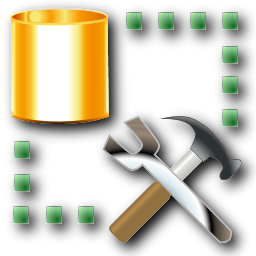
SQL Server Course
A Cursor allow us to retrieve data from a result set in singleton fashion means row by row. Cursor are required when we need to update records in a database table one row at a time. I have already explained the SQL Server Basics of Cursors.
A Cursor impacts the performance of the SQL Server since it uses the SQL Server instances' memory, reduce concurrency, decrease network bandwidth and lock resources. Hence it is mandatory to understand the cursor types and its functions so that you can use suitable cursor according to your needs.
You should avoid the use of the cursor. Basically you should use cursor alternatives like as WHILE loop, sub queries, Temporary tables and Table variables. We should use cursor in that case when there is no option except cursor.
Types of Cursors
Static Cursors
A static cursor populates the result set at the time of cursor creation and the query result is cached for the lifetime of the cursor. A static cursor can move forward and backward direction. A static cursor is slower and use more memory in comparison to other cursor. Hence you should use it only if scrolling is required and other types of cursors are not suitable.
No UPDATE, INSERT, or DELETE operations are reflected in a static cursor (unless the cursor is closed and reopened). By default static cursors are scrollable. SQL Server static cursors are always read-only.
Dynamic Cursors
A dynamic cursor allows you to see the data updation, deletion and insertion in the data source while the cursor is open. Hence a dynamic cursor is sensitive to any changes to the data source and supports update, delete operations. By default dynamic cursors are scrollable.
Forward Only Cursors
A forward only cursor is the fastest cursor among the all cursors but it doesn't support backward scrolling. You can update, delete data using Forward Only cursor. It is sensitive to any changes to the original data source.
There are three more types of Forward Only Cursors.Forward_Only KEYSET, FORWARD_ONLY STATIC and FAST_FORWARD.
A FORWARD_ONLY STATIC Cursor is populated at the time of creation and cached the data to the cursor lifetime. It is not sensitive to any changes to the data source.
A FAST_FORWARD Cursor is the fastest cursor and it is not sensitive to any changes to the data source.
Keyset Driven Cursors
A keyset driven cursor is controlled by a set of unique identifiers as the keys in the keyset. The keyset depends on all the rows that qualified the SELECT statement at the time of the cursor was opened. A keyset driven cursor is sensitive to any changes to the data source and supports update, delete operations. By default keyset driven cursors are scrollable.
SQL SERVER – Examples of Cursors
CREATE TABLE Employee ( EmpID int PRIMARY KEY, EmpName varchar (50) NOT NULL, Salary int NOT NULL, Address varchar (200) NOT NULL, ) GO INSERT INTO Employee(EmpID,EmpName,Salary,Address) VALUES(1,'Mohan',12000,'Noida') INSERT INTO Employee(EmpID,EmpName,Salary,Address) VALUES(2,'Pavan',25000,'Delhi') INSERT INTO Employee(EmpID,EmpName,Salary,Address) VALUES(3,'Amit',22000,'Dehradun') INSERT INTO Employee(EmpID,EmpName,Salary,Address) VALUES(4,'Sonu',22000,'Noida') INSERT INTO Employee(EmpID,EmpName,Salary,Address) VALUES(5,'Deepak',28000,'Gurgaon') GO SELECT * FROM Employee

Static Cursor - Example
SET NOCOUNT ON DECLARE @Id int DECLARE @name varchar(50) DECLARE @salary int DECLARE cur_emp CURSOR STATIC FOR SELECT EmpID,EmpName,Salary from Employee OPEN cur_emp IF @@CURSOR_ROWS > 0 BEGIN FETCH NEXT FROM cur_emp INTO @Id,@name,@salary WHILE @@Fetch_status = 0 BEGIN PRINT 'ID : '+ convert(varchar(20),@Id)+', Name : '+@name+ ', Salary : '+convert(varchar(20),@salary) FETCH NEXT FROM cur_emp INTO @Id,@name,@salary END END CLOSE cur_emp DEALLOCATE cur_emp SET NOCOUNT OFF

Dynamic Cursor - Example
--Dynamic Cursor for Update SET NOCOUNT ON DECLARE @Id int DECLARE @name varchar(50) DECLARE Dynamic_cur_empupdate CURSOR DYNAMIC FOR SELECT EmpID,EmpName from Employee ORDER BY EmpName OPEN Dynamic_cur_empupdate IF @@CURSOR_ROWS > 0 BEGIN FETCH NEXT FROM Dynamic_cur_empupdate INTO @Id,@name WHILE @@Fetch_status = 0 BEGIN IF @name='Mohan' Update Employee SET Salary=15000 WHERE CURRENT OF Dynamic_cur_empupdate FETCH NEXT FROM Dynamic_cur_empupdate INTO @Id,@name END END CLOSE Dynamic_cur_empupdate DEALLOCATE Dynamic_cur_empupdate SET NOCOUNT OFF Go Select * from Employee
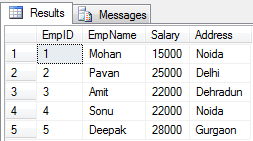
-- Dynamic Cursor for DELETE SET NOCOUNT ON DECLARE @Id int DECLARE @name varchar(50) DECLARE Dynamic_cur_empdelete CURSOR DYNAMIC FOR SELECT EmpID,EmpName from Employee ORDER BY EmpName OPEN Dynamic_cur_empdelete IF @@CURSOR_ROWS > 0 BEGIN FETCH NEXT FROM Dynamic_cur_empdelete INTO @Id,@name WHILE @@Fetch_status = 0 BEGIN IF @name='Deepak' DELETE Employee WHERE CURRENT OF Dynamic_cur_empdelete FETCH NEXT FROM Dynamic_cur_empdelete INTO @Id,@name END END CLOSE Dynamic_cur_empdelete DEALLOCATE Dynamic_cur_empdelete SET NOCOUNT OFF Go Select * from Employee
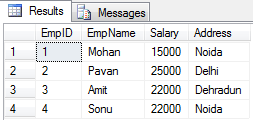
Forward Only Cursor - Example
--Forward Only Cursor for Update SET NOCOUNT ON DECLARE @Id int DECLARE @name varchar(50) DECLARE Forward_cur_empupdate CURSOR FORWARD_ONLY FOR SELECT EmpID,EmpName from Employee ORDER BY EmpName OPEN Forward_cur_empupdate IF @@CURSOR_ROWS > 0 BEGIN FETCH NEXT FROM Forward_cur_empupdate INTO @Id,@name WHILE @@Fetch_status = 0 BEGIN IF @name='Amit' Update Employee SET Salary=24000 WHERE CURRENT OF Forward_cur_empupdate FETCH NEXT FROM Forward_cur_empupdate INTO @Id,@name END END CLOSE Forward_cur_empupdate DEALLOCATE Forward_cur_empupdate SET NOCOUNT OFF Go Select * from Employee
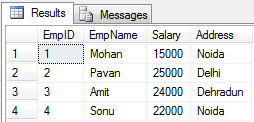
-- Forward Only Cursor for Delete SET NOCOUNT ON DECLARE @Id int DECLARE @name varchar(50) DECLARE Forward_cur_empdelete CURSOR FORWARD_ONLY FOR SELECT EmpID,EmpName from Employee ORDER BY EmpName OPEN Forward_cur_empdelete IF @@CURSOR_ROWS > 0 BEGIN FETCH NEXT FROM Forward_cur_empdelete INTO @Id,@name WHILE @@Fetch_status = 0 BEGIN IF @name='Sonu' DELETE Employee WHERE CURRENT OF Forward_cur_empdelete FETCH NEXT FROM Forward_cur_empdelete INTO @Id,@name END END CLOSE Forward_cur_empdelete DEALLOCATE Forward_cur_empdelete SET NOCOUNT OFF Go Select * from Employee
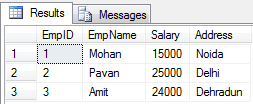
Keyset Driven Cursor - Example
-- Keyset driven Cursor for Update SET NOCOUNT ON DECLARE @Id int DECLARE @name varchar(50) DECLARE Keyset_cur_empupdate CURSOR KEYSET FOR SELECT EmpID,EmpName from Employee ORDER BY EmpName OPEN Keyset_cur_empupdate IF @@CURSOR_ROWS > 0 BEGIN FETCH NEXT FROM Keyset_cur_empupdate INTO @Id,@name WHILE @@Fetch_status = 0 BEGIN IF @name='Pavan' Update Employee SET Salary=27000 WHERE CURRENT OF Keyset_cur_empupdate FETCH NEXT FROM Keyset_cur_empupdate INTO @Id,@name END END CLOSE Keyset_cur_empupdate DEALLOCATE Keyset_cur_empupdate SET NOCOUNT OFF Go Select * from Employee
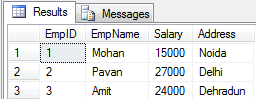
-- Keyse Driven Cursor for Delete SET NOCOUNT ON DECLARE @Id int DECLARE @name varchar(50) DECLARE Keyset_cur_empdelete CURSOR KEYSET FOR SELECT EmpID,EmpName from Employee ORDER BY EmpName OPEN Keyset_cur_empdelete IF @@CURSOR_ROWS > 0 BEGIN FETCH NEXT FROM Keyset_cur_empdelete INTO @Id,@name WHILE @@Fetch_status = 0 BEGIN IF @name='Amit' DELETE Employee WHERE CURRENT OF Keyset_cur_empdelete FETCH NEXT FROM Keyset_cur_empdelete INTO @Id,@name END END CLOSE Keyset_cur_empdelete DEALLOCATE Keyset_cur_empdelete SET NOCOUNT OFF Go Select * from Employee
 Read More Articles Related to SQL Server
Read More Articles Related to SQL Server
Summary
In this article, I try to explain the types of Cursor in SQL Server with a simple example. I hope after reading this article you will be able to understand different types of cursors in SQL Server. I would like to have feedback from my blog readers. Please post your feedback, question, or comments about this article.
Take our free sqlserver skill challenge to evaluate your skill

In less than 5 minutes, with our skill challenge, you can identify your knowledge gaps and strengths in a given skill.





